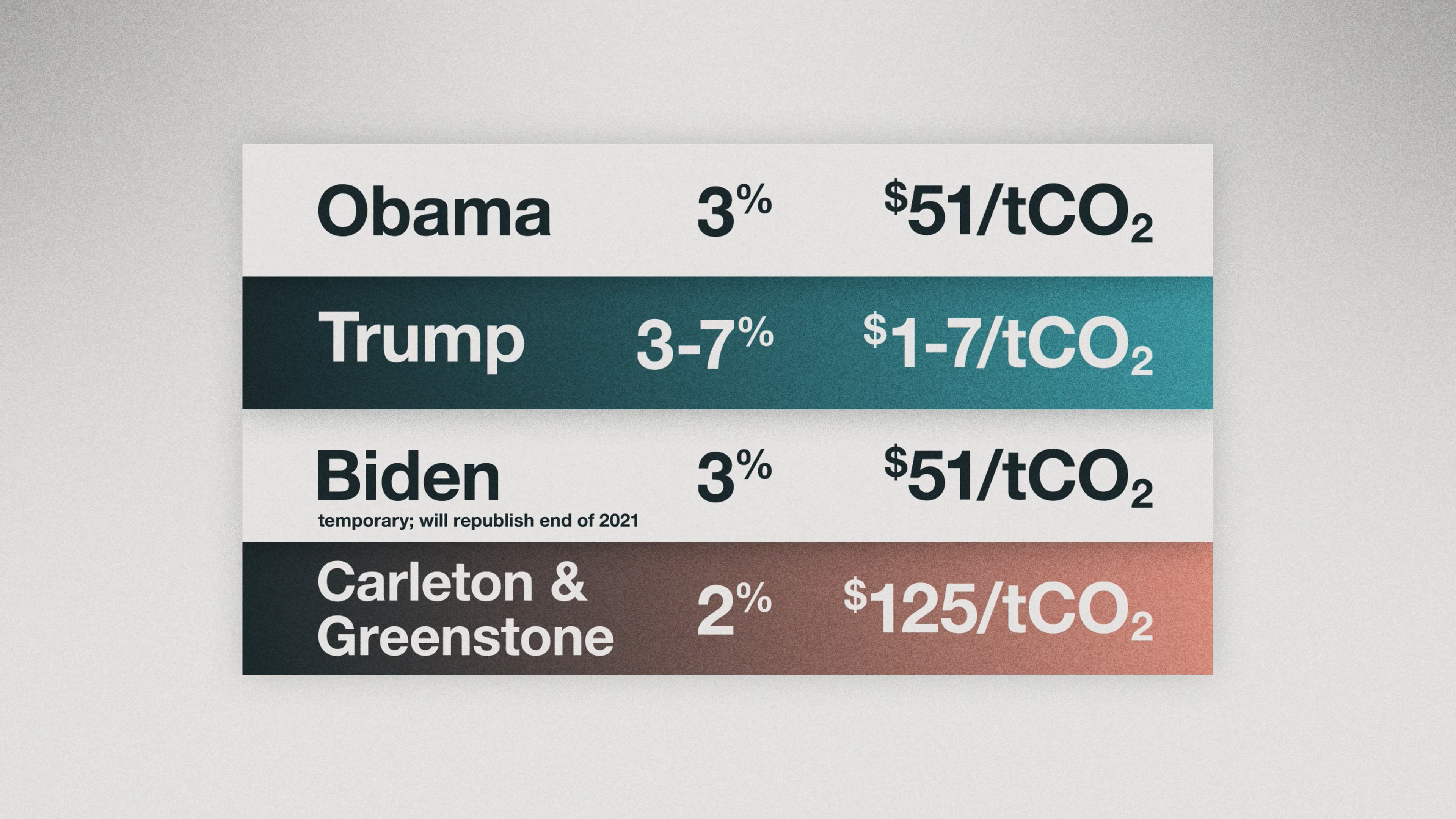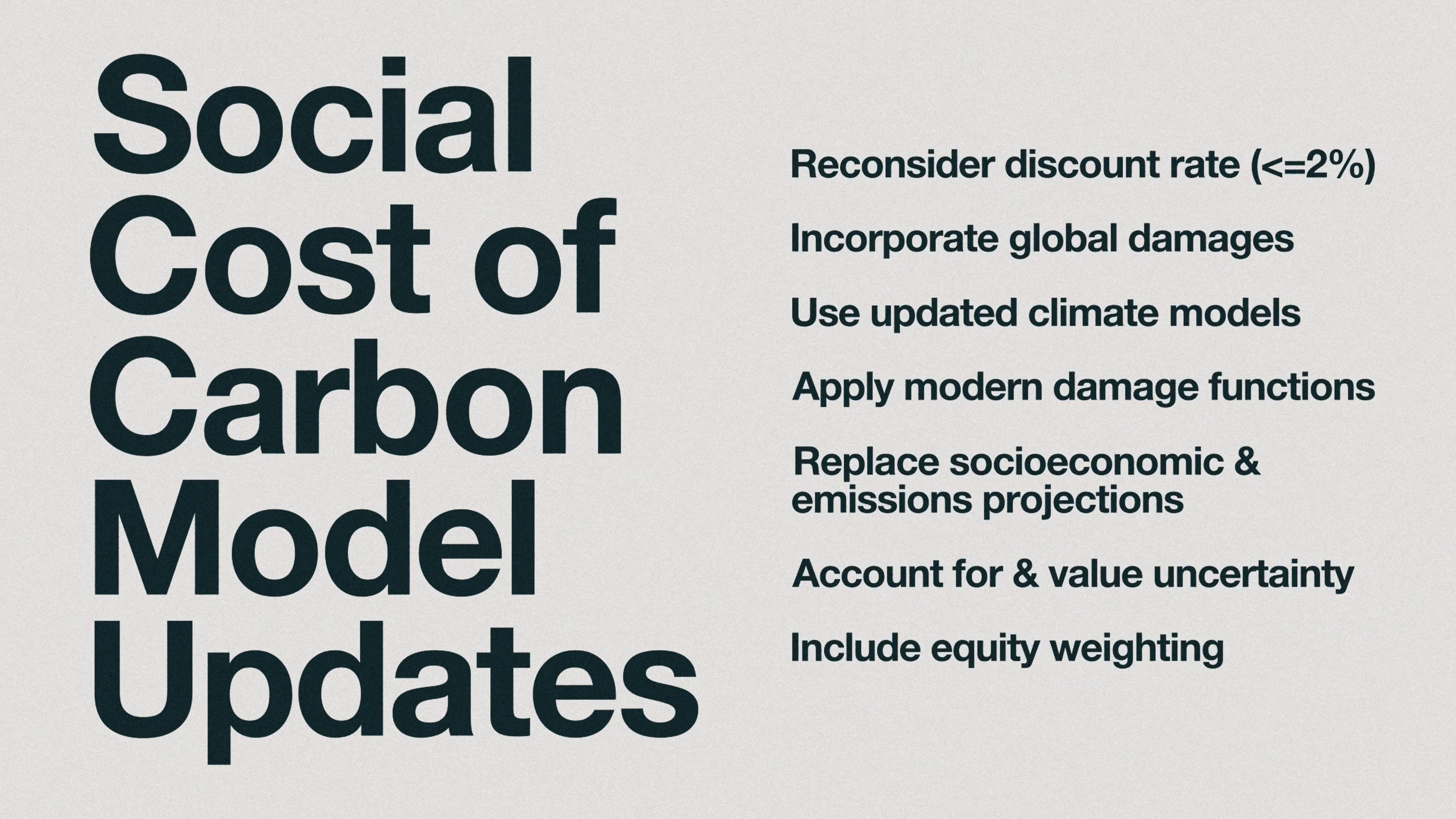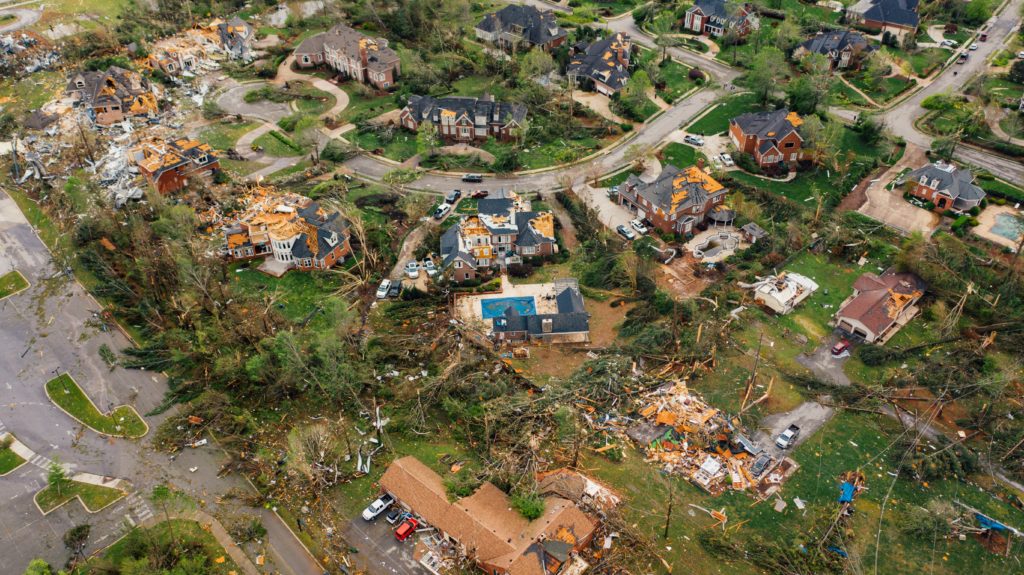Episode Transcript
Anthropogenic CO2 emissions are largely emitted without direct economic consequence to the emitter. But these emissions are causing significant changes to the environment that have real economic impacts. In order to assess the economic impacts of climate change, economists and climate scientists have come together to try to define what is known as the social cost of carbon. What is this value? How is it calculated? And how can governments, corporations, and the average individual use it to help reduce carbon emissions? To help us answer these questions, we spoke with two leading experts: Tamma Carleton, affiliate of the Climate Impact Lab and assistant professor of economics at UC Santa Barbara; and Robert Kopp, climate scientist, and director of the Rutgers Institute of Earth, Ocean, and Atmospheric Sciences and co-director of the Climate Impact Lab. So what is the social cost of carbon?
Dr. Tamma Carleton:
It is the most important number you’ve never heard of. The social cost of carbon is an attempt to monetize all of the social and economic harms that occur from every ton of emissions that we release into the atmosphere. So every time we drive our cars, we ramp up production in a manufacturing facility, that increase in emissions into the atmosphere will lead to a small change in our global climate. And the social cost of carbon is our attempt to monetize all of the many damages that that additional amount of warming will cause. So these damages span from crop losses in the US Midwest, to migration within and across country borders, to increased health risk. And we’re trying to bundle all of those damages into one dollar value called the social cost of carbon.
To phrase this another way, if we expect a certain amount of dollars in economic damages in the future caused by carbon emissions, we should be willing to pay something today to avoid those future costs [1]. But what exactly should this number be? How have policy makers in the United States approach this question so far?

Dr. Bob Kopp:
In the last year of the Bush administration, the different agencies started taking various different approaches to estimating what is the value to society of reducing carbon dioxide emissions by a ton. In 2009, when the Obama administration came in, they said, okay, well, we actually need a standardized approach to this that’s used consistently across agencies, and we’re going to look at how the global economy changes in response to that extra ton of CO2. Um, then we’re going to look at that difference. So the difference is that additional damage caused by that ton of CO2. And then we’re going to do some economic magic known as discounting to turn this time series of future damages over the next several hundred years into a single number that we value today. And so that’s how you measure the social cost of carbon.
So the key steps are:
- producing estimates of future emissions and economic growth,
- turning those into projections of future physical climate change, and
- turning those projections of the future physical climate change into estimates of human impacts and associated economic damages, and then
- discounting them into a present value dollar term.

Now, unless you’re an economist, the term discount rate may not be one you’re familiar with, but it’s a very important variable in calculating the social cost of carbon.
Dr. Tamma Carleton:
The discount rate is an incredibly important parameter in the social cost of carbon calculation. Every time we emit a ton of carbon, the impact on the global climate, takes hundreds of years to fully materialize. So that means we need to be thinking about how we can monetize impacts that happen to my children and my grandchildren when I’m counting the value today. That’s a very difficult problem. It’s ethically challenging, philosophically challenging, one of, sort of the key most objective ways to think about why this number should be there, why we shouldn’t even think about discounting the future relative to the present, is that we know we sort of have intuition for the idea that a hundred dollars is worth a whole lot more to a poor person than to a rich person. And when we think about the future, we know that on average GDP is growing around the world. People are likely to be richer in the future than they are today. And so when they realize a hundred dollars of damage from climate change, it will matter less to them than it will today because they’re likely to be richer. And so even putting ethics and philosophy aside about how much I care about my future grandchildren relative to myself, even if we try to set that aside, there’s still an argument for discounting the future, purely based on the idea that on average populations are likely to be richer.
So the discount rate is the measure of the present value of future cost to society. This means that if you predict a future where the economy will grow faster and is more capable of paying for the expected damages of climate change, then that implies a higher discount rate and therefore a lower cost of carbon today. If on the other hand, do you think the economy will grow more slowly and will be less able to bear the burden of future damages? Then you have to assume a lower discount rate and therefore a higher cost of carbon today. During the Obama administration, the central discount rate was set at 3% resulting in a social cost of carbon, of around $51 per ton of CO2 [2]. During the Trump administration, the discount rate ranged between 3% and 7%. The higher rates were based on the assumption that the US economy is going to grow rapidly.
Additionally, the Trump administration only factored in US damages as opposed to global damages, resulting in a social cost of carbon between $1 and $7 [3,4]. On the first day of the Biden administration in 2021, president Biden signed an executive order temporarily restoring the discount rate to the Obama era 3%. This interim value will be used until the end of 2021, when the Biden administration is expected to release a new official value for the social cost of carbon [2]. This new value will theoretically help the United States reach ambitious climate goals, such as building a net zero economy by 2050. According to Tamma Carleton’s research, a more accurate discount rate would be no higher than 2%, which would put the social cost of carbon at around $125 [5]. So how is the social cost of carbon used in the creation of federal policy?

Dr. Bob Kopp:
If you’re writing a fuel efficiency standard, your writing an appliance efficiency standard, you’re writing a power plant regulation, how do you value the benefits of reduced climate change? The Obama administration also started to branch out into looking at things like the environmental impacts associated with leasing on public lands, and the Biden executive order specifically calls for the interagency working group to look at a variety of places where this could be used also, including things like procurement policies.
Dr. Tamma Carleton:
The reason the social cost of carbon is important for policy is because it helps us address this fundamental trade-off in climate change. We know that it is expensive to lower emissions. We’re going to have to ask car manufacturers to change their factories so that they can produce more fuel efficient cars, for example. We know that’s going to cost money, right? And we need to be able to measure how costly that is against all the benefits that society will reap by mitigating future climate change by lowering the amount of climate change we face. And so we’re sitting here trying to assess, you know, it’s going to be costly for those automakers to change their factories, but we’re going to benefit from lower health risk in the future if we dial back those emissions. And so the social cost of carbon is really powerful because it turns those benefits into dollars so that policymakers can sit there at the table and say, here are the dollar value of the benefits we realize by lowering our emissions. And we can put that right next to the dollar value of the cost to lower those emissions.
So far, we’ve seen significant progress in the effort to estimate the social cost of carbon. However, is this estimate accurate enough to drastically reduce carbon emissions? What more should the US government do to encourage the use of the social cost of carbon when weighing the costs and benefits of climate change adaptation and mitigation? Along with reconsidering the discount rate and incorporating global damages into the calculation, finding a better estimate for the social cost of carbon should include using the latest climate models, damage functions and socio-economic and emissions projections, accounting for and valuing uncertainty and factoring in equity weighting. With these updates, the social cost of carbon would have the ability to influence climate policy and regulate industries across all sectors in a way that more effectively decarbonizes the United States economy [5].

Check out our full length podcast episode with Tamma Carleton and our episode with Bob Kopp, where we go into further detail on how they are working to create a comprehensive and equitable cost of carbon. Or check out our newsletter. For the full list of planned episodes, to sign up for new releases and more, visit climatenow.com. Thanks and see you next time.
Sources
[1] Price, R., Thornton, S., & Nelson, S. (2007, December 01) The social cost of carbon and the shadow price of Carbon: What they are, and how to use them in ECONOMIC appraisal in the UK. Retrieved March 02, 2021, from https://mpra.ub.uni-muenchen.de/74976/
[2] Interagency Working Group on Social Cost of Greenhouse Gases, United States Government (2021) Technical Support Document: Social Cost of Carbon, Methane, and Nitrous Oxide Interim Estimates under Executive Order 13990 https://www.whitehouse.gov/wp-content/uploads/2021/02/TechnicalSupportDocument_SocialCostofCarbonMethaneNitrousOxide.pdf
[3] Bordoff, J. Trump vs. Obama on the Social Cost of Carbon – and Why It Matters. The Wall Street Journal. Published November 15, 2017, accessed May 12, 2021 from https://www.wsj.com/articles/trump-vs-obama-on-the-social-cost-of-carbonand-why-it-matters-1510769071?tesla=y
[4] U.S. Environmental Protection Agency (2019) Regulatory Impact Analysis for the Repeal of the Clean Power Plan, and the Emission Guidelines for Greenhouse Gas Emissions from Existing Electric Utility Generating Units (EPA-452/R-19-003) Washington, DC: U.S. Government Printing Office. Accessed June 7, 2021 from https://www.epa.gov/sites/production/files/2019-06/documents/utilities_ria_final_cpp_repeal_and_ace_2019-06.pdf
[5] Carleton, T. and M. Greenstone (2021) Updating the United States Government’s Social Cost of Carbon. University of Chicago, Becker Friedman Institute for Economics Working Paper No. 2021-04, Available at SSRN: https://ssrn.com/abstract=3764255 or http://dx.doi.org/10.2139/ssrn.3764255











